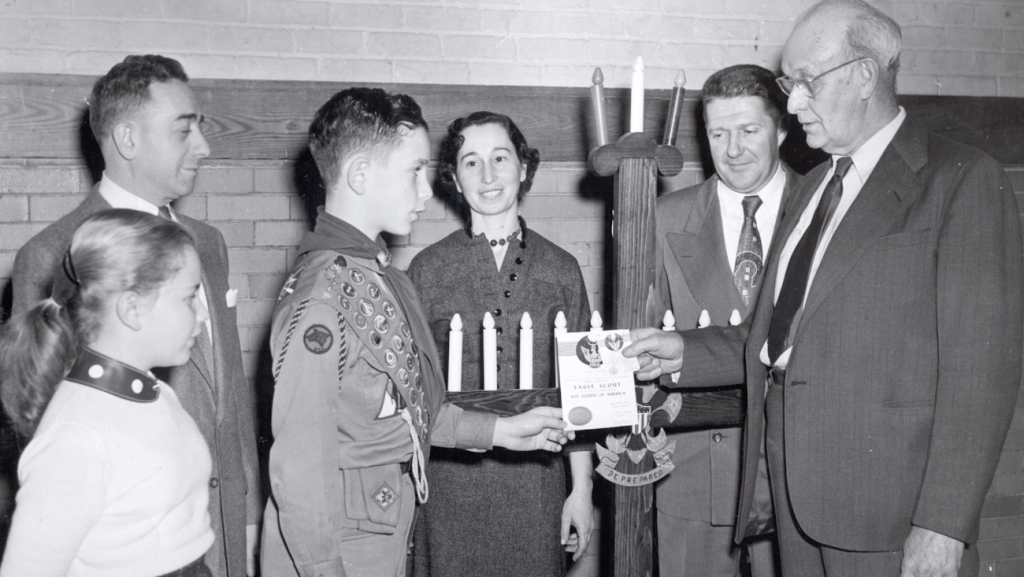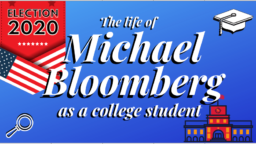Born in 1942 into a middle-class family in Medford, Massachusetts, Democratic presidential candidate Michael Bloomberg’s higher education story is one of hard work, ambition and certainly a bit of luck.
As a high school student, he worked part-time at a small electronics company in nearby Cambridge, Massachusetts. During that time, his father was a bookkeeper for a local dairy who never earned more than $6,000 a year.
Upon graduating from Medford’s public high school, Bloomberg got into Johns Hopkins University in Baltimore, Maryland. He was accepted to the prestigious university, at least in part, because his boss at the electronics company, who was an engineer and MIT graduate, reached out to people she knew at Johns Hopkins’ Applied Physics Laboratory to recommend Bloomberg. After touring the campus, he was immediately sold.
“I’d never seen anything more beautiful in my life. The sun was shining. The flowers were out. In those days, people spent a lot of money on the grounds,” Bloomberg said in a 1999 interview.
He was able to attend Johns Hopkins University and pay his $1,600 annual tuition through government loans and by working a job in a campus parking lot that paid him $35 a week.

Already an Eagle Scout and known for being a go-getter, Bloomberg was quick to join campus groups at Johns Hopkins. Most notably, he became the first Jewish student to join the fraternity Phi Kappa Psi. He would go on to become the president of his fraternity, of the Inter-Fraternity Council and eventually of his graduating class.
“Fraternities at Johns Hopkins weren’t much different from the classic John Belushi movie, ‘Animal House,’ ” Bloomberg wrote in his memoir. “Though Hopkins was a serious place, and very competitive scholastically, we did drink and party a lot together.”
Although Bloomberg is known to portray himself in college as a partier, that’s only half-true. His college friends, including his fraternity brother Matthew Crenson, are quick to recall his consistent hard work.
“Did he exaggerate? We had a lot of parties and he was at all of them but I never saw him drunk and saw a lot of others drunk. He seemed very determined, the way he would work,” Crenson told Joyce Purnick for her biography “Mike Bloomberg: Money, Power, Politics.”
Undoubtedly, though, Bloomberg was well known as the party planner. He’d come up with elaborate schemes that would occasionally succeed and other times fall through.
“I remember in November I had planned a big fraternity dance in the gym,” Bloomberg said in the 1999 interview, “and we had spent all our budget hiring James Brown and the Flames to play, and then [John F.] Kennedy got shot and we canceled the dance and couldn’t get our deposit back. Never got the deposit back.”
Interestingly, Bloomberg also made his mark on Johns Hopkins by designing and creating the college’s Blue Jay mascot. He also served as the mascot for a handful of lacrosse games.
But in the classroom, Bloomberg had few ideas about what he wanted to study. He decided to major in engineering, despite having minimal interest in pursuing a career in the subject.
“I think it’s fair to say I had absolutely no Idea what I would do,” Bloomberg told the New York Times. “I went in thinking I would study physics, but German was a requirement, so I changed to the engineering school. The whole idea of college is to expose yourself to various ideas and cultures and places, to minor in something different, to travel abroad.”
Until his senior year, Bloomberg had a straight C average, something he attributes to being “lazy” and spending too much time “chasing the girls.” Yet, again, his friends may disagree with that sentiment and instead blame his extracurricular activities for taking away from his studying.
“Mike was always working,” Jack Galotto, who recruited Bloomberg to his fraternity, told the Baltimore Sun. “He tried to give the illusion that he wasn’t doing that much, that he was just hanging out, but he always made sure he got things done.” Galotto has said that, unlike most 18-year-old boys, Bloomberg’s freshman dorm room was spotless and organized.
Nonetheless, by April 1963, any of Bloomberg’s party-kid qualities — real or fabricated — went away. That was the month his father died unexpectedly from heart failure at age 57. His friends at the time recall that his father’s death instilled a new intensity in Bloomberg. That intensity fueled his desire to become someone special, and that meant going to Harvard Business School, a school that had always impressed his father.
So, for the first semester of his senior year, he took a double-course load and got all As.
“I applied to business school and got in, much to everyone’s amazement, particularly mine. Then I went right back to getting Cs for my last semester,” Bloomberg said in an interview for the book “Getting There.”
Bloomberg graduated from Johns Hopkins with an engineering degree in 1964 and immediately enrolled at Harvard Business School. He knew that he was not cut out to be an engineer. Instead, he thought business management might be a better option. He’d built up the experience and an interest in the subject from his leadership roles at Johns Hopkins.
By the time Bloomberg reached Harvard’s campus in 1964, it was the peak of the Vietnam War — a time filled with debate and protest. Bloomberg, however, largely stayed away from it all. He was drafted in 1966, but was rejected due to having flat feet.
At Harvard, Bloomberg’s own comments suggest he went back to his old ways. “I always sat at the back by the door so I could duck out for a cigarette or sneak out when it looked like I might get called on,” Bloomberg said in the 1999 interview.
But, of course, that could be an exaggeration. After all, Bloomberg did graduate in 1966, on time. Upon graduation, he joined the investment banking company Salomon Brothers and went on to form his own company in 1981.
Now, with a net worth of over $60 billion, Bloomberg continues to be a strong proponent of higher education. In 2018, Bloomberg gave $1.8 billion to his alma mater Johns Hopkins and devoted it exclusively to financial aid. It is the largest-ever contribution to an academic institution in American history.



